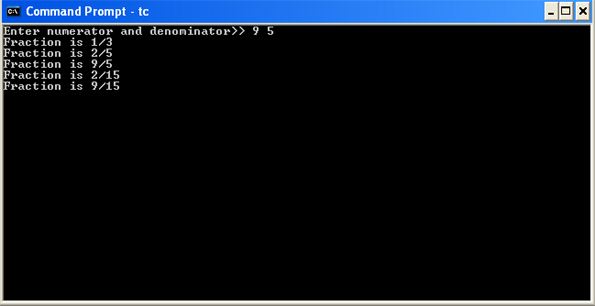The C program computes the rational approximation to a given real number, i.e., given a real number val, the program computes a pair of integers N and D such that the fraction N/D is a good approximation to val. To do so, we use the following series of steps.
• Take a guess integer value for N.
• Find D by rounding off (N/val).
• Compute the difference between val and N/D. If the difference is less than the specified value, print the values of N and D.
#include<stdio.h> #include<conio.h> #include<math.h> #define NMAX 1000000 int main() { unsigned long num,den; double val,error,delta; int nsig; clrscr(); val=acos(-1.0); /* val =pi for our example*/ nsig=6; delta=1.0/pow(10.0,nsig); printf("\n Finding rational approx. to %17.15lf",val); printf("\n correct to %d significant places\n",nsig); for(num=1;num<=NMAX;num++) { den= num/val+0.5; error=fabs(1.0-num/(den*val)); if(error<=delta) { printf("\n %ld/%ld = %17.15lf for %17.15lf",num,den,(double)num/den,val); nsig=-log10(error); printf("\n Correct to %d significant digits",nsig); break; } } getch(); return 0; }

 Dinesh Thakur holds an B.C.A, MCDBA, MCSD certifications. Dinesh authors the hugely popular
Dinesh Thakur holds an B.C.A, MCDBA, MCSD certifications. Dinesh authors the hugely popular